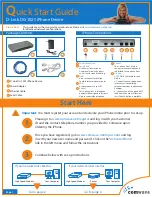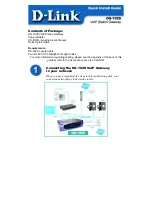
Chapter 5 WAN Setup
29
5.1.1 What You Can Do in the WAN Screens
• Use the
Internet Connection
screen (
) to configure the WAN settings on
the Device for Internet access.
• Use the
More Connections
screen (
) to set up additional Internet access
connections.
• Use the
3G Backup
screen to configure 3G WAN connection (
5.1.2 What You Need to Know About WAN
Encapsulation Method
Encapsulation includes data from an upper layer protocol into a lower layer protocol. To set up a
WAN connection to the Internet, you need to use the same encapsulation method used by your ISP
(Internet Service Provider). If your ISP offers a dial-up Internet connection using PPPoE (PPP over
Ethernet) or PPPoA, they should also provide a username and password (and service name) for user
authentication.
WAN IP Address
The Device uses its WAN IP address to connect to the Internet and communicate with devices in
other networks. It can be static (fixed) or dynamically assigned by the ISP when the Device connects
to the Internet.
If your ISP assigns you a static WAN IP address, they should also assign you the subnet mask and
DNS server IP address(es) (and a gateway IP address if you use the Ethernet or ENET ENCAP
encapsulation method).
Multicast
Traditionally, IP packets are transmitted in one of either two ways - Unicast (1 sender - 1 recipient) or
Broadcast (1 sender - everybody on the network). Multicast delivers IP packets to a group of hosts
on the network - not everybody and not just one.
IGMP
Devices use the IGMP (Internet Group Management Protocol) network-layer protocol to establish
membership in a multicast group - it does not carry user data. IGMP versions 2 and 3 offer
improvements over the widely-used version 1.
IPv6
IPv6 (Internet Protocol version 6) provides increased IP address space and enhanced features in
comparison to IPv4. The Device supports IPv4/IPv6 dual stack and can connect to IPv4 and IPv6
networks.















































